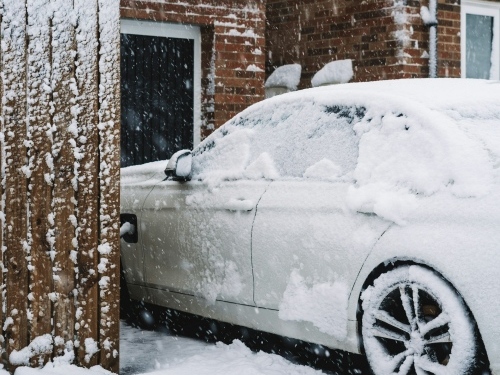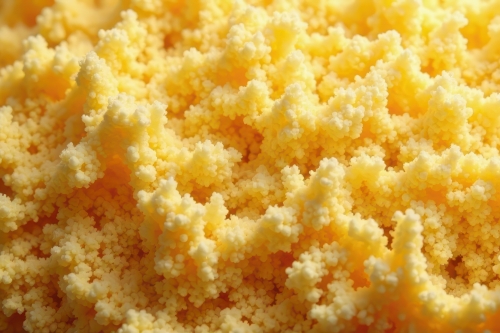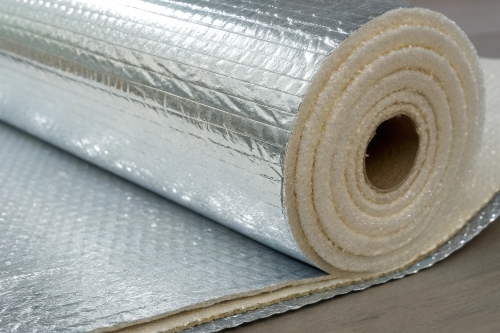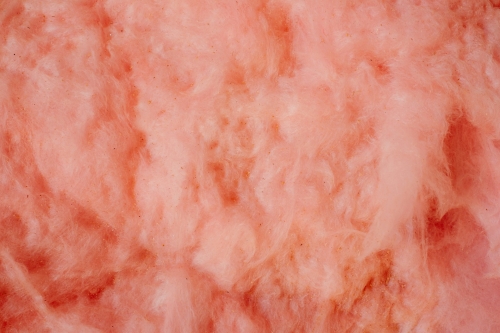Garage Door Insulation: Types, Benefits & Installation FAQs

Garage doors are marvels of engineering providing a fast, safe and efficient method of gaining ingress and egress to your Loveland home. But while they are definitely more energy efficient from an electricity standpoint than they used to be, many could still use some help when it comes to preventing heat loss in the winter and heat penetration in the summer. In this post, we're going to take a deep dive into the issue of garage door insulation.
Why Overhead Doors Should Be Well-Insulated
It's not unusual for developers to put the least expensive garage doors they can find onto the homes they build. And while these doors typically have a nice appearance and are reasonably dependable, many are not well insulated. If they are insulated at all.
When someone buys the house they find out during the depths of the Colorado winter that their garage door is a heat sieve, pulling precious heated air from rooms adjacent to the garage and allowing it to escape into the atmosphere. The best way to stop this disturbing level of waste is to make sure the garage door is fully insulated.
The Benefits Of An Energy-Efficient Garage Door
Here are just some of the other benefits of having an insulated, energy-efficient garage door.
Here are some key benefits of having an insulated, energy-efficient garage door.
Lower Energy Bills
An uninsulated garage door can significantly impact your energy costs, especially if the garage is integrated into your home’s design. Heat loss through an uninsulated door can drive up bills, but upgrading to a fully insulated door reduces energy waste, leading to noticeable savings.

A Quieter Home
Insulated garage doors reduce outside noise, blocking traffic sounds, noisy neighbors, and even lawn equipment. The insulation also muffles the door’s own operational sounds, creating a quieter indoor environment.
Better for Your Car
Colorado’s harsh winters can be tough on vehicles. An insulated garage door helps maintain warmer temperatures inside the garage, reducing strain on your car’s battery and mechanical systems.

Improved Home Security
Insulation strengthens overhead doors, making them more resistant to extreme weather and damage. A stronger garage door enhances home security, making break-ins more difficult while also extending the door’s lifespan and overall value.
Enhanced Home Value
Energy efficiency, security, and noise reduction all contribute to higher property value. Insulated doors also require fewer repairs and last longer, making them a smart investment for homeowners.

Types of Garage Insulation
Insulating your garage can improve energy efficiency, regulate temperature, and reduce noise. Some insulation types work for both garage doors and walls, while others are limited to one or the other. If you're not comfortable with DIY installation, consider hiring a local garage door professional or handyman for the job.
Cellulose
A top choice for eco-conscious homeowners, cellulose insulation is made from recycled materials. However, it requires professional installation, as it must be blown into wall and ceiling cavities after cutting holes in the surface. This method is unsuitable for unfinished walls and cannot be applied to garage doors, making it one of the least convenient options.

a piece of felted material used for lining or insulating items such as quilts and sleeping bags.
Rigid Foam
Rigid foam is an excellent DIY-friendly option, available in large batts that can be cut to fit walls, ceilings, and garage doors. Installation is straightforward—simply measure, cut, and adhere the foam using construction adhesive. It offers strong insulation at a lower cost than spray foam or cellulose, making it a practical and versatile choice.
batt • a piece of felted material used for lining or insulating items such as quilts and sleeping bags. a sheet of matted cotton, wool, or synthetic fibers.
SOURCE: Oxford English Dictionary
Reflective Foil
Reflective foil insulation is lightweight, easy to install, and effective at retaining heat. Sold in rolls, it is affixed to walls and ceilings to reflect warmth back into the garage. While it cannot be used for garage doors, its affordability and ease of installation make it a popular option.

Spray Foam
Known for its high R-value (often over 20), spray foam provides superior insulation and a strong vapor barrier. It reinforces structural integrity but is one of the most expensive choices. Unless you're converting your garage into living space or can install it yourself, spray foam may not be a cost-effective solution for typical garage use.
r-value • a measure of resistance to the flow of heat through a given thickness of a material (such as insulation) with higher numbers indicating better insulating properties
SOURCE: Merriam Webster
Fiberglass
A widely used and budget-friendly choice, fiberglass insulation is available in rolls at most hardware stores. It works well for garage doors, walls, and ceilings, though proper safety precautions—gloves, long sleeves, and a mask—are necessary due to its irritant properties.

Each insulation type has advantages and limitations, which our garage door service team has outlined in the table below.
| Insulation Type | DIY-Friendly | Works on Walls & Ceilings | Works on Garage Doors | Cost | Effectiveness (R-Value) |
|---|---|---|---|---|---|
| Cellulose | No | Yes | No | High | Moderate |
| Spray Foam | No | Yes | No | Very High | High |
| Rigid Foam | Yes | Yes | Yes | Moderate | High |
| Reflective Foil | Yes | Yes | No | Low | Low to Moderate |
| Fiberglass | Yes | Yes | Yes | Low | Moderate |
If affordability and ease of installation are priorities, rigid foam or fiberglass may be the best choices. For superior thermal resistance, spray foam excels—though at a higher cost. Choose the option that best suits your budget, insulation needs, and installation preferences.
Garage Door Insulation FAQs
Yes! Insulated garage doors prevent excessive heat from entering your garage, keeping it cooler in summer. This is especially helpful if your garage is attached to your home, as it reduces overall cooling costs.
Most insulated doors have a multi-layer construction, often with foam or fiberglass inside. Tap on your garage door—if it sounds hollow, it’s likely uninsulated. You can also check for an insulation rating (R-value) on the manufacturer’s label.
Regularly check for loose insulation, gaps, or moisture buildup. Clean the door panels and lubricate moving parts to ensure smooth operation. If any insulation starts to degrade, replace it promptly. If you're in the Loveland area, you can call our garage door professionals for routine garage door inspections and preventative maintenance services.
Yes! A well-insulated garage door helps seal small openings that might allow insects and rodents inside. Proper weather stripping further enhances pest prevention.
Quality insulation can last 10-20 years, depending on materials and environmental factors. Foam panels and fiberglass tend to last longer than spray foam, which may deteriorate over time.
Yes, but use paint suitable for the material. If your door has rigid foam panels, make sure the paint does not dissolve the insulation. Many insulated doors come with a factory finish that may not require painting.
Possibly. Some manufacturers void warranties if modifications are made. Check with your garage door provider before installing insulation yourself to avoid losing warranty coverage.
Can I Install Garage Door Insulation Myself?
Installing insulation on a garage door should be within the ability of most dedicated do-it-yourselfers. And there are quite a few DIY garage door insulation kits on the market that will save you the trouble of having to figure everything out for yourself. Still, it won't be easy. As such, if you don't have a lot of experience performing home maintenance or remodeling tasks then insulating the garage door is probably something you should leave to the professionals.
Here are just a few of the things that can go wrong if you make mistakes trying to install garage door insulation on your own:

- Garage Door Damage — You could cause panels on the garage door to become misaligned. If that happens, it can affect the operation of the door, put undue stress on the garage door opener, and negatively impact the overall safety of the door.
- Excessive Weight — Installing the wrong type of insulation may add too much weight to the door, leading to opener burnout, premature wear on the springs, and increased strain on the tracks. This can cause misalignment and long-term damage.
- Poor Adhesion — If the insulation is not properly secured, it can detach unexpectedly, creating safety hazards for children and pets. Loose insulation also reduces the door’s effectiveness, allowing heat to escape and diminishing energy efficiency.
- Reduced Door Functionality — Adding insulation incorrectly may interfere with the door’s movement, making it difficult to open or close. Poorly installed insulation can obstruct hinges, rollers, or sensors, leading to operational failures.
- Voided Warranty — Many garage door manufacturers offer warranties that may be voided if unapproved modifications are made. DIY insulation could unintentionally violate these terms, leaving you without coverage for future repairs.
But if you're smitten by the DIY bug here's a video that shows one way to insulate your garage door.
Need Garage Door Insulation or a New Garage Door?
Visit the page below to learn more about the garage door repair, maintenance and installation services we offer in Northern Colorado - or call our team for a free estimate!Garage Door Services
Call C & M Garage Doors For Loveland Garage Door Services
Insulating the garage door will help your home become more energy efficient, safer and more valuable while also extending the life of your car and blocking noise from both the outside, and from the door itself.
To learn more about the benefits of an insulated garage door, or to order garage door installation for your home, get in touch with the team at C & M Garage Doors. We're easy to reach, just call us at (970) 663-7335 during regular business hours.
